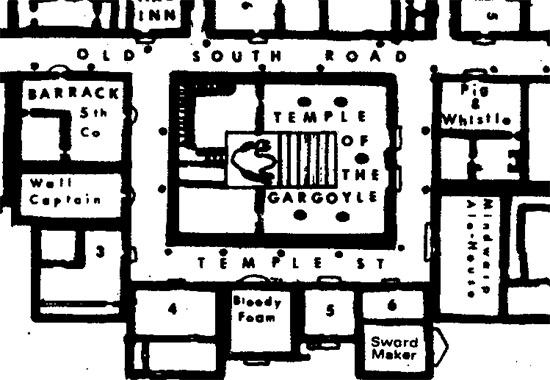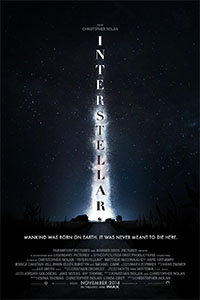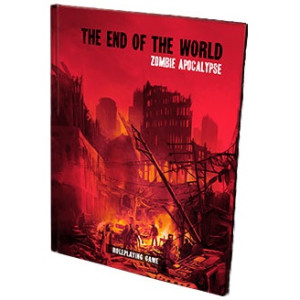LOCATION: THE MINDWARP ALEHOUSE
The Mindwarp Alehouse is kaleidoscopically eclectic: The bar is made of a deep crimson marble. Some of the tables are heavy affairs of oak, while others are rickety assemblages of pine (and at least one is actually made of balsa wood). The walls are plain wood, but inset with apparently random niches – some of which are concealed behind panels. A rope of teeth longer than a man’s  hands hangs decoratively along one wall, and animal heads are mounted on another. In the corner a small platform serves as a stage for a belly-dancer and her musical accompaniment.
hands hangs decoratively along one wall, and animal heads are mounted on another. In the corner a small platform serves as a stage for a belly-dancer and her musical accompaniment.
Those who listen to the tales of Klevator Bur, the owner, would lead you to believe that there is a legend behind every item in the bar. Those with a firmer grasp on reality will note that Bur must have spent fabulously little on his mismatched furnishings and knick-knack decorations.
Nonetheless, the atmosphere of the Mindwarp Alehouse is nothing if not distinct. And, to many, it’s highly appealing. This is largely due to the fact that the only source of illumination in the common room is a mammoth fireplace of black marble, and this Bur keeps stocked with flammable, alchemical bricks, which cause the fireplace to burn in an exotic rainbow of colors: Blues, reds, yellows, purples, oranges, and a plethora of colors in-between regularly wash over the shadowy interior of the Mindwarp.
The Mindwarp’s other claim to fame is Bur’s ale. The brew itself is a cheap swill, but Bur mixes it with exotic drugs and herbs – lending his various ales both a unique flavor and a wide variety of debilitating (and enjoyable) effects. Combined with the lightshow created by the fireplace, the effect can be quite powerful.
CHARACTER: KLEVATOR BUR
Klevator Bur loves the role of the barkeep, a part for which it seems he was born: He is a man of girth and a grin, with expansive gestures which emphasize his every word. Those who frequent the Mindwarp will tell you that he can smoothly fill three mugs with ale at once, and have each movement punctuate whatever tale he may be telling at the time.
Indeed, Bur is infamous for his tall tales, which he tells at every opportunity (see sidebars for some examples). In fact, only one of the many tales he tells is true: The Legend of the Wishing Fountain (see sidebar).
He is endeared to his patrons, and is harsh to no man… save those who harm his person, his custom, or his beloved bar.
CHARACTER: DELLIRA LOVELOCKS
Dellira is the Mindwarp’s belly dancer: If you haven’t come for Klevator’s stories or the mind-numbing ale, then you’ve come to see Dellira dance.
Dellira is visually stunning: Deep blue eyes, an immaculate face, and soft, blond hair top a body of the type that men have been known to die for. No one is really sure how Bur convinced a girl like this to dance for him – which has led to a number of lewd theories – but the truth is that Bur took her in and protected her from those who were trying to take advantage of her on the streets. Dellira looks upon Bur as a savior and a father, and Bur looks on her as a daughter.
Which is not to say that Dellira has not had her share of flings with the Mindwarp’s patrons – but all of those (invariably brief) relationships have come from her initiative. Those who push in the other direction are rebuffed; and those who persist will feel Bur’s anger.
Price List: Ale
| Name | Cost | Effect |
| Light Ale | 1 cp | Normal alcohol. Very poor quality. |
| Dark Ale | 2 cp | The room darkens around the character. And strange, disturbing shapes emerge from the shadows. |
| Blue Ale | 5 cp | The world takes on a watery, shimmering appearance. The air feels thick around the character, as if they were moving through water. |
| Gray Aerie | 1 sp | Creates an extreme high, but renders the world into black and white. |
| Violet Twilight | 5 sp | The world becomes laced with tendrils of pulsating purple, accompanied by mild hallucinations (usually involving the distinct doubling or tripling of an item or person). |
| Dragon's Breath Ale | 1 gp | The drinker feels extremely hot -- as though suffering from a high fever. The world all about seems wreathed in fire. |
| Elven Ecstasy | 5 gp | Random, light-hearted hallucinations accompanied by feelings of extreme pleasure. |
| Crimson Lotus | 1 pp | The character experiences a highly satisfying, soothing high. The world sparkles with opalescent auras. |
Story: Legend of the Wishing Founts
It is said that between the Upper and the Lower Catacombs of the hollow peak of Nimbus Tor, there lie the great Paragon Caverns. The dark recesses of those mammoth caves conceal many secrets, and among them are the Wishing Founts.
These miraculous, perpetual geysers spout water both cold and pure – at times, it is said, as high as a hundred feet into the nighted cavern. Powered by some unknown magic, it is said that those who sacrifice items of true worth to the giver will be granted a wish.
Story: Rivers of Fire
As Bur tells the tale, two years ago a group of wandering adventurers who had often frequented the Mindwarp stumbled through his back doors – battered and bleeding – scant moments after he had locked the front. He offered them solstice, and as they mended their wounds they told a harrowing tale of a journey to the dungeons beneath the Cryptic Citadel. They told Bur that there were passages in that dark labyrinth that led even further into the earth, and that when they followed these they left all traces of the civilized world behind.
The greater part of this story changes with every telling. There, in the depths beneath the Cryptic Citadel, Bur has weaved tales both sublime and comical: Tribes of fungoid barbarians stalk his adventurers one night, while on others they wander through great works of ancient steel and magic. In another telling it is albino halflings who play crude tricks on them. In yet another they travel through strange blue gates to the corners of the world, or wander lost in those caverns until thirst and hunger drive them to near madness.
Oddly, however, two details in Bur’s story never waver: First, every telling has the adventurers leaving the Mindwarp near dawn to scale the walls and escape the city before some unnamed wrath of the Overlord. Second, as they go the adventurers drop dark hints of some deeper evil… and of “rivers of fire” which course and churn through those stygian depths beneath the city.
Story: The Gremlins of the Tower
A number of rumors and stories have accumulated around the abandoned tower in the southwest corner of the city wall (L8), but none are quite so ingenious or varied as Bur’s tales of the Gremlins of the Tower. These mischievous creatures, who make their home in the walls of the tower, play a variety of tricks and pranks on both those who venture in and near their home. Upon occasion, as Bur’s tales would have it, they have even been known to venture far afield from its walls to wreak havoc across the City State.
Rumor: Whitecloak the Druid
A few of the local mercenaries who frequent the Mindwarp on the sojourns through the City State have heard that a mysterious druid – known only as Whitecloak – is hiring men-at-arms for a two week contract at the Red Axe Inn.















